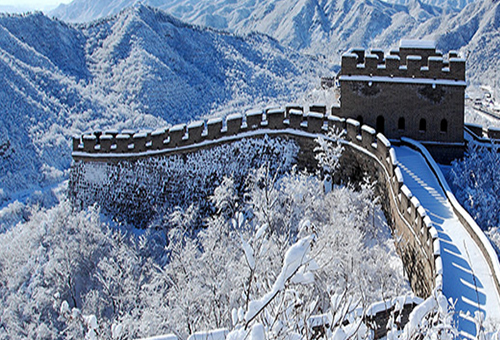
Jvyongguan
As a new development and considered the "science and education park" of Beijing, Changping is regarded as an ecological barrier of the capital's northwest region. It is also a prosperous and peaceful place boasting 6,000 years of civilization and 2,000 years as a renowned cultural tourism district with two world cultural heritages, namely the Ming Tombs and the Juyong Pass. Additionally, Changping is also a district of innovation and vitality committed to the construction of the main platform of the national center for scientific and technological innovation and serving the high-quality development of the capital.
With an area of 1,343.5 square kilometers, Changping now has 8 sub-districts and 14 towns under its jurisdiction, with a residential population of 2.166 million. Over the past 40 years of reform and opening up, significant improvement has been achieved in terms of the district's comprehensive economic strength, regional development and social welfare. Additionally great headway has been made in its various undertakings through its commitment to implementing the strategy of developing the district through science and education, and the execution of an innovation-driven developmental strategy. Especially, after Xi Jinping, general secretary of the Central Committee of the Communist Party of China inspected Beijing twice in 2014 and 2017 respectively, Changping has seized historical opportunities in the coordinated development of the Beijing-Tianjin-Hebei region and the development of "four centers" of Beijing. As a result, Changping is currently undergoing profound changes in social and economic development that is based on reduced use of land for construction and guided by innovation.
As the historical "Pillow of the Capital" and a district with cultural charm in the new era, Changping has been known for the discovery of Xueshan Culture, the first neolithic cultural site ever found in Beijing. The name of the district dates back 2,000 years to the Western Han Dynasty when Changping was a xian (county) originally named "Jundu" in the Qin Dynasty. After being upgraded into a zhou (prefecture) in the Ming Dynasty, two towns named Yong'an and Gonghua were developed, making Changping what is now called the "Pillow of the Capital" and the "Capital-Guarding Place of Vital Significance". In addition to two world cultural heritage sites, the district also has six cultural sites protected at the national level including the Yinshan Pagoda Forest and Baifu Spring. Juyongdiecui, forestry scene near Juyong Pass, is reputed as one of the historical Great Eight Sights of Yanjing. The CPC's special branch in Changping's Nankou Town is among the earliest CPC branches established by workers.
Over the past years, adhering to the notions of "Nourishing People and Strengthening the District through Culture", the district has launched a project on remapping Changping's historical and culture development that has excavated, categorized and saved a number of historical and cultural resources. Changping is also the only among all districts in Beijing being involved in the building of all the three major cultural belts including the Grand Canal, the Great Wall and Xishan's Yongding River. Changping is also working on its preservation and construction project for local historical and cultural landmarks, i.e. construction of Baifu Spring Park located at the source of the Grand Canal, comprehensive protection of cultural heritage and relics of various kinds, and development of the entrance service area at the Ming Tombs as well as the cultural innovation area in the east part of Changping New Town. Through these efforts, the district strives to build itself into an area with cultural charm and a wonderful mix of history, culture, and modern science and technology.

